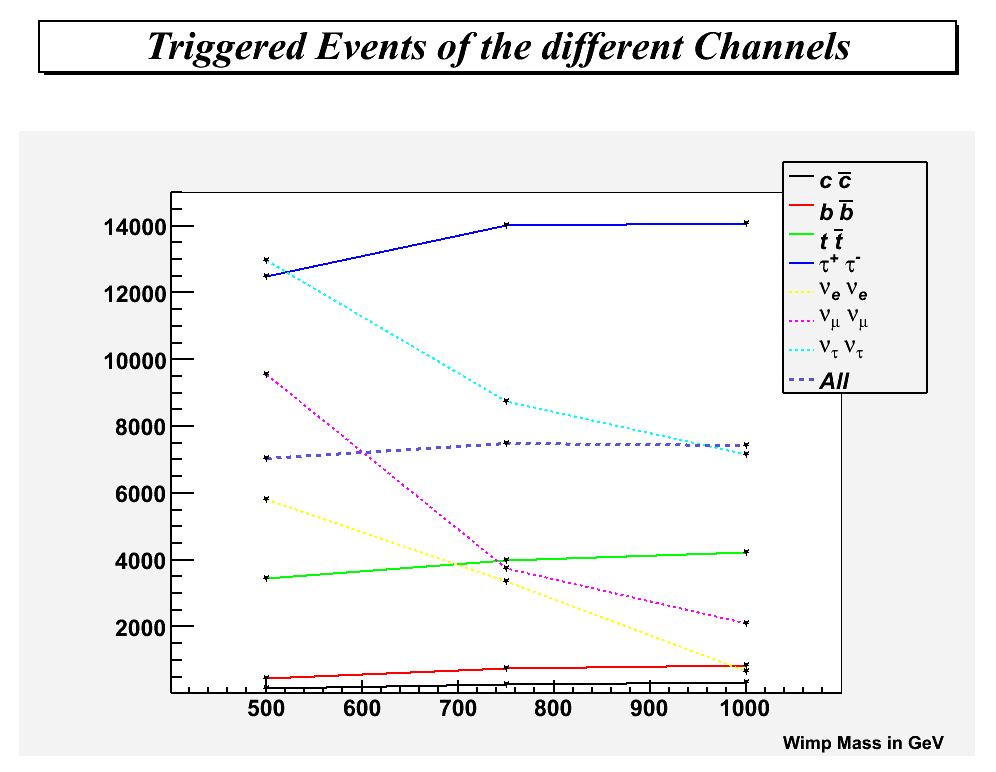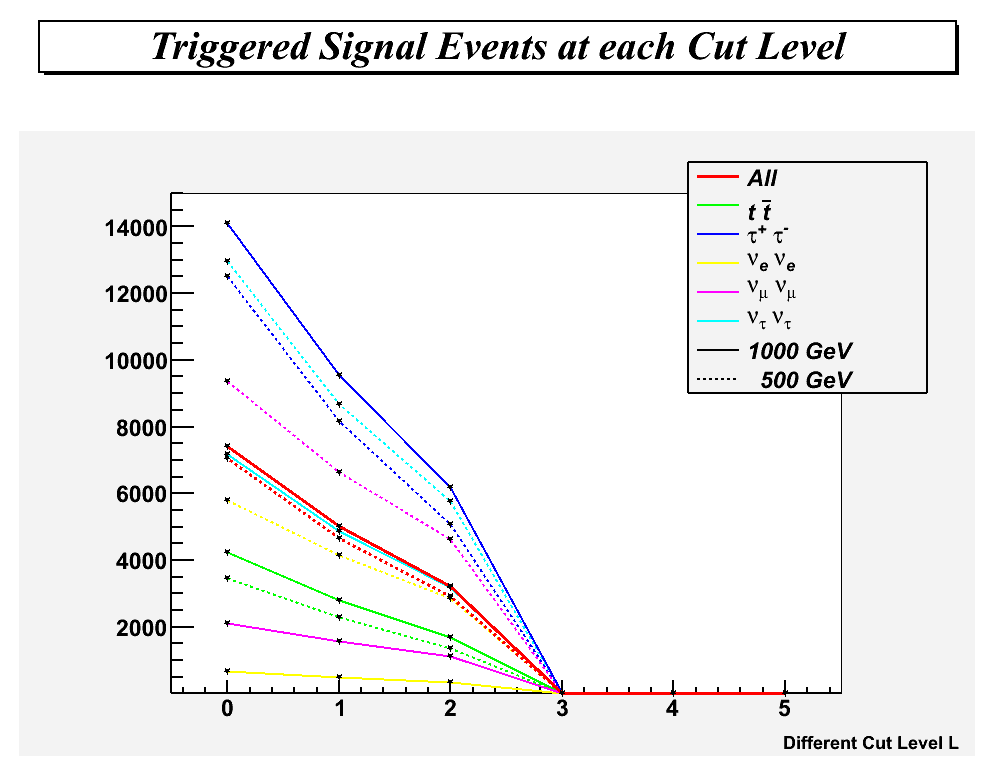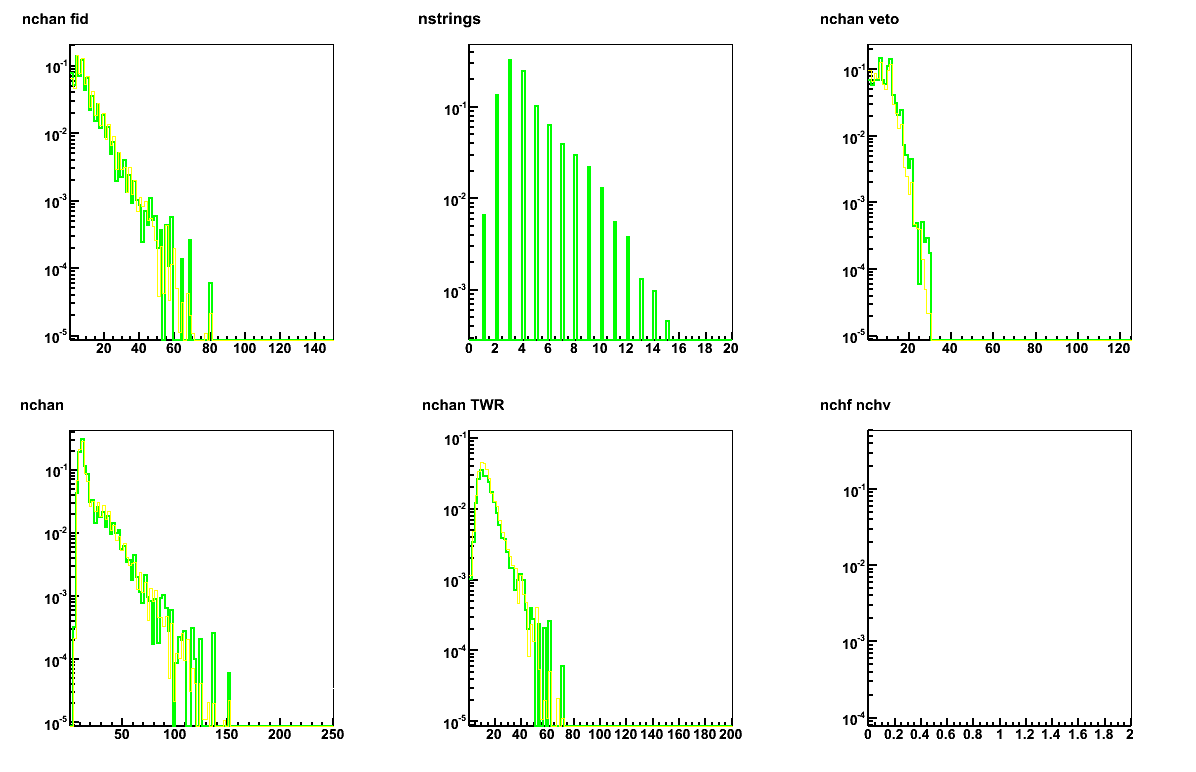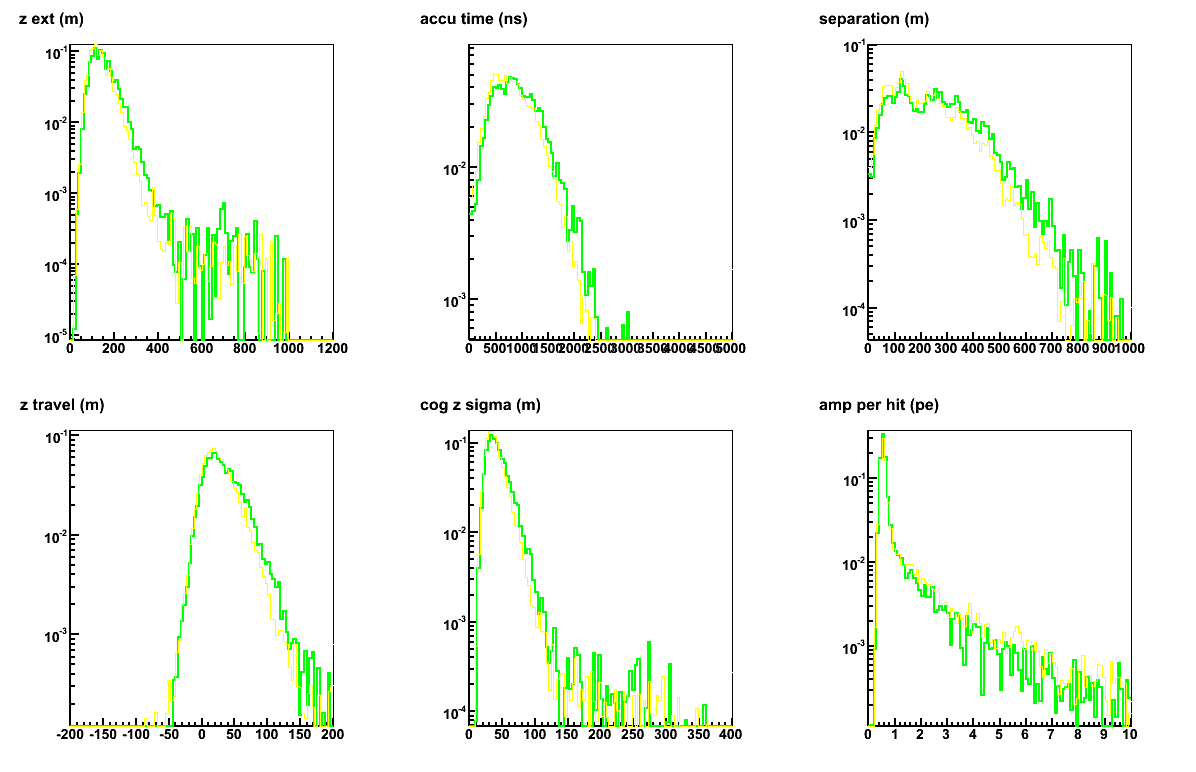Different Comparisons of the simulated Signals
(incl. a comparison with the new Wimp All Channel)
This is an overview over the different simulated Wimp channels. I also created an additional Wimp channel, which is named All. This channel can be regarded as the 'realistic' or 'true' KK-Wimp signal at the detector. All individually simulated channels, which trigger the detector, are added according to their predicted branching ratios. Due to the fact, that the underliying theory of KKDM has very few free/unknown parameters, this step is well motivated. The aim of using this channel, is to determine wether the optimum analysis is performed by individual 'Cutsets' for each channel and Energy(traditional methode), or if the same sensitivity can be achieved by one single set of Cuts applied on the All signal.
Triggered Events in the Combined Detector 2007:
All displayed channels are simualted with the DarkSUSY code (DarkSUSY Computing Supersymmetric Dark Matter Properties Numerically , P. Gondolo, J. Edsjö, P. Ullio, L. Bergström, M. Schelke and E.A. Baltz, JCAP 0407 (2004) 008. [arXiv:astro-ph/0406204]. Web: http://www.physto.se/~edsjo/darksusy) which also simulates channels, specific to KKDM. 2 million annihilations are choosen.

Surviving Signal Events at the different Cut Levels:
This plot contains for the Energies of 500GeV and 1000GeV the evolution of the triggered signal events. In this plot channels with very little contribution to the final signal, which can be seen in the figure above, are neglected. (so far, plot shows values for L0 and L1; more to come soon)

Supporting facts to justify the possible usefullness of the Wimp All channel:
The following plots show several choosen parameters available for the analysis. The green graph displays the Wimp All channel. To determine how smeared out the Wimp All channel is in comparison to single channels, the yellow graph shows the strongest signal at 500GeV coming from the τ neutrino channel. At first impression, it is quite clearly to see, that the (normalized to 1) parameters show very little difference. This doesn't necessarily imply that the later Cuts can be performed as efficiently as they can for 'pure' channel signals, but it indicates the possibilty. Therefore, I will use the new ALL channel as an additional approach.
Wimp All Ch 18
| Parameter | Description |
| nchan | Number of hit DOMs |
| nchan fid | Number of hit DOMs in fidutial region |
| nchan twr | Number of hit Amanda OMs |
| nchan veto | Number of hit DOMs in veto region |
| nstrings | Number of hit strings |
| nchf nchv | Ratio of hit DOMs in veto and fidutial region |

| Parameter | Description |
| z ext | Extension of muon track in z direction in metre (z[max]-z[min]) |
| accu time | Time till 75% of the total charge are accumulated in ns |
| seperation | Distance between the calculated cog(xyz)[1st. quartile(t)] and cog(xyz)[4th. quartile(t)] |
| cog z sigma | Calculated uncertainty of the CenterOfGravity in z direction |
| z travel | Average drift of hits in z direction, calculated from z(average)[1st. quartile] |
| amp per hit | charge per hit |
